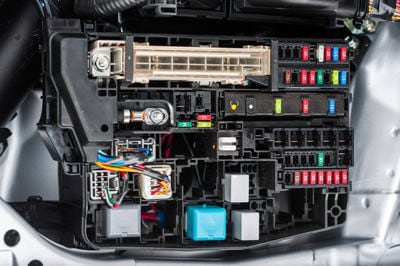Top Tips for Effective Electrical System Troubleshooting
Repairing electric systems needs a methodical approach, based in a thorough understanding of electrical concepts and security procedures. By familiarizing oneself with circuit components, using important tools, and adhering to an organized examination approach, experts can effectively determine and deal with problems. However, the subtleties of reliable troubleshooting prolong beyond mere technological expertise; recognizing exactly how to document searchings for and prioritize safety and security can significantly affect outcomes. As we discover these vital elements even more, it becomes clear that grasping this process is not just beneficial yet important for success in the field.
Understand the Fundamentals
Recognizing the fundamentals of electric systems is necessary for efficient troubleshooting, as a solid foundation permits specialists to diagnose and deal with issues more successfully. A detailed understanding of electric principles, such as voltage, current, resistance, and power, is vital in recognizing the origin of issues. Voltage is the electrical possible distinction that drives present with a circuit, while resistance opposes the circulation of existing, affecting the general capability of the system.
Experience with circuit parts, including resistors, capacitors, diodes, and switches over, is also paramount. Each part plays a distinct duty in circuit actions and can impact performance when malfunctioning. Furthermore, understanding collection and identical circuit configurations is important, as these setups affect the distribution of voltage and present within the system.
Professionals have to be aware of prospective risks, such as shock and short circuits, to apply safe troubleshooting methods. By grasping these foundational ideas, service technicians boost their capacity to conduct reliable diagnostics and fixings, inevitably leading to enhanced performance and integrity of electric systems (electrical system troubleshooting).
Gather Necessary Tools
Efficient troubleshooting of electric systems calls for the best set of devices to identify and resolve concerns accurately. Essential devices consist of a multimeter, which measures voltage, present, and resistance, enabling for specific evaluations of electric elements.
Additionally, shielded hand devices such as screwdrivers, pliers, and cord strippers are crucial for securely controling electric connections. It is additionally advisable to have a circuit tester handy to confirm the existence of voltage in outlets and cables. For even more complex systems, a thermal imaging video camera can help find overheating elements, showing potential failures.

Comply With a Methodical Technique
Having gathered the suitable tools, the next step in repairing electric systems is to adhere to an organized technique. A systematic method guarantees that specialists can determine mistakes effectively and precisely, lessening downtime and stopping unneeded repair services.
Begin by assessing the system's schematic layouts and specs. This involves checking each part systematically, starting from the power resource and functioning towards the lots.
Make use of testing equipment, such as multimeters and oscilloscopes, to collect objective information about voltage, existing, and resistance at different factors within the system. This empirical evidence will certainly assist your troubleshooting efforts and aid to verify or eliminate possible root causes of failing.
In addition, think about environmental factors that might influence the system's efficiency, such as temperature level fluctuations or dampness ingress. A comprehensive examination of electrical wiring, connections, and elements will make sure that all possibilities are made up.
Paper Your Findings
Detailed paperwork is important in the repairing process of electric systems. Precise documents improve the efficiency of recognizing persisting issues and promote communication among staff member. Each searching for needs to be carefully noted, consisting of symptoms observed, tests carried out, and the end results of those tests. Extra resources electrical system troubleshooting. This practice not only help in recognizing the origin reason of the trouble however additionally works as a referral for future troubleshooting initiatives.

In addition, keeping a log of components replaced or repair work done is very useful. This information sustains stock administration and can assist evaluate the longevity and integrity of details elements.
Eventually, the paperwork process need to be thorough yet succinct, making it possible for very easy access and testimonial - electrical system troubleshooting. By focusing on in-depth paperwork, technicians can produce an important knowledge base that not just aids in existing troubleshooting however also encourages future upkeep efforts, thereby boosting overall system integrity

Prioritize Precaution
Recognizing the integral dangers associated with electric systems is essential for guaranteeing safety and security during troubleshooting. Electric shock, burns, and devices damage are simply a few of the potential dangers that technicians deal with. Focusing on safety steps is not just a lawful commitment however additionally a moral imperative that safeguards both the specialist and the surrounding setting.
Prior to commencing any type of troubleshooting job, specialists must sites wear appropriate personal protective devices (PPE), consisting of shielded handwear covers, shatterproof glass, and flame-resistant clothes. Making sure that the job location is completely dry and without clutter can substantially lower the you could try here threat of accidents. It is crucial to de-energize circuits prior to starting any kind of job, validating that they are not live via the usage of a multimeter or voltage tester.
Developing clear interaction procedures with team members is likewise crucial; this makes sure that everybody knows prospective risks and the status of the electrical system being serviced. Last but not least, having an emergency situation feedback strategy in location can show indispensable in the event of an event. By focusing on precaution, technicians can effectively minimize threats and promote a much safer workplace.
Conclusion
Reliable electrical system troubleshooting depends on a thorough understanding of essential principles and a systematic approach. Prioritizing safety and security measures ensures the wellness of people entailed and the integrity of the electrical system.